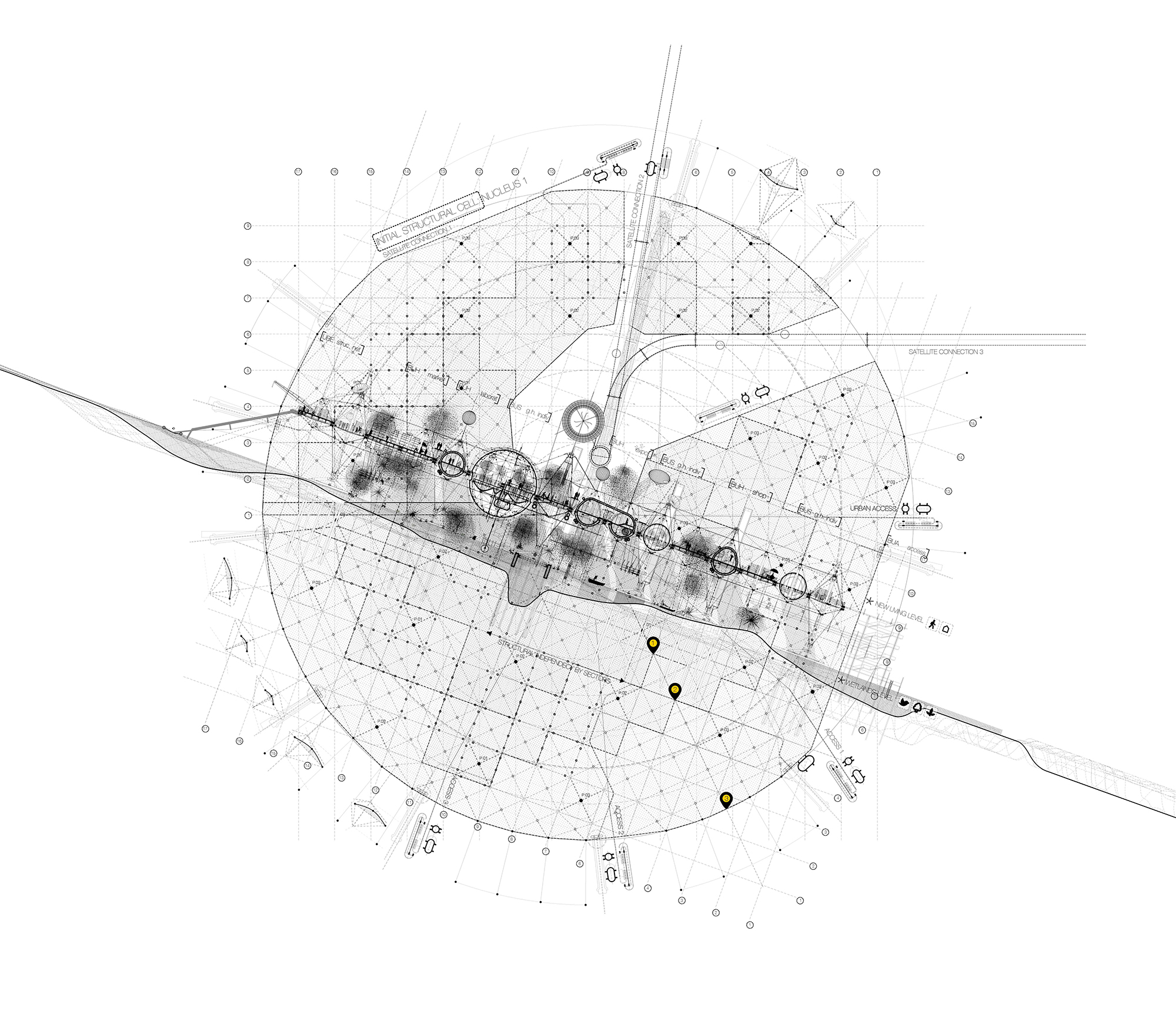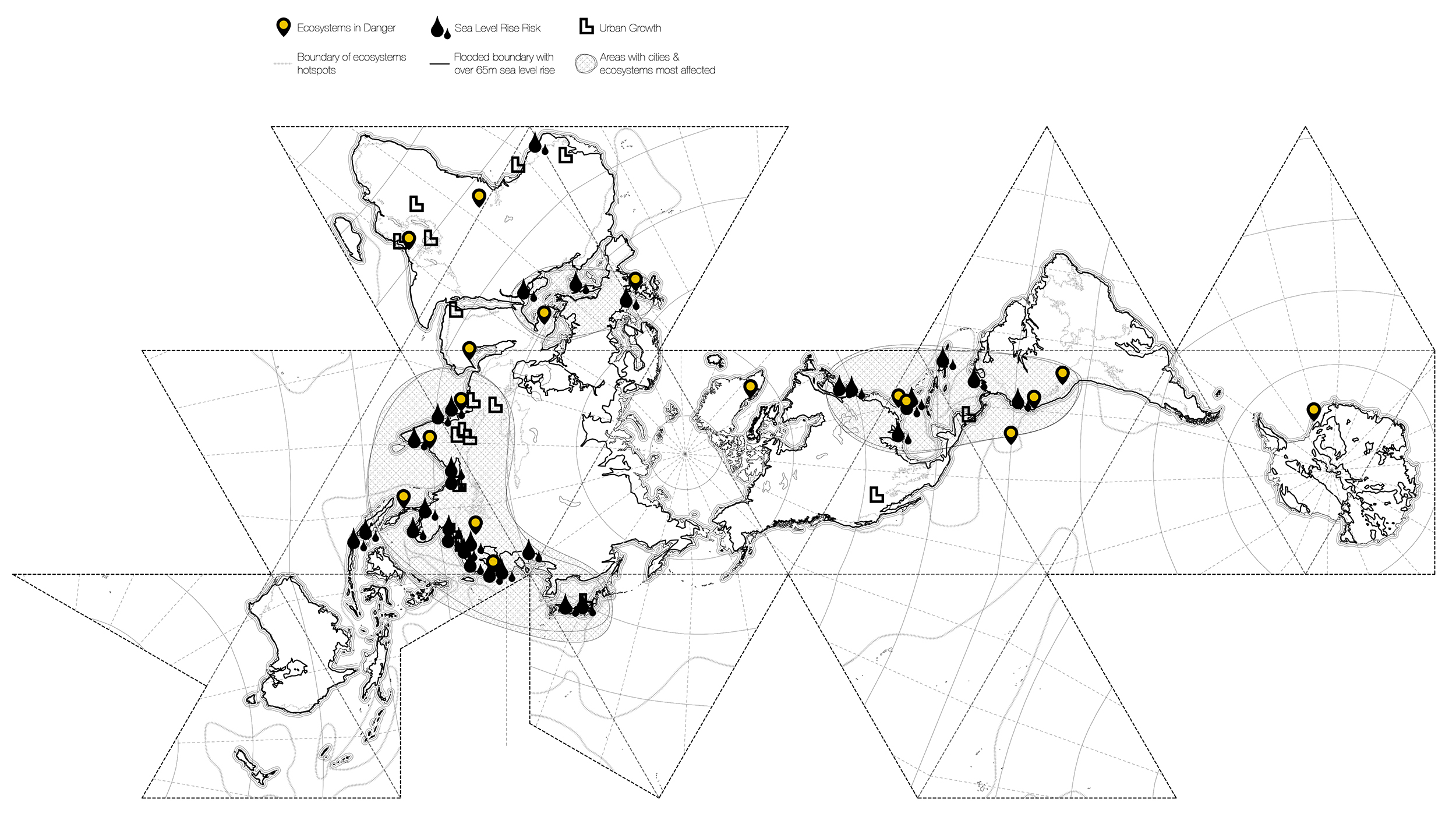︎︎︎
Re-Generator
Plan to regenerate the Wetlands of Hangzhou
Hangzhou, China 2014
Y
The project stems from an analysis of the world’s population growth. A rapid growth is expected for the first half of the 21st century, propelled specially, by the developing countries (from 7.2 billion to 9.6 billion people estimated in UN´s ”World Population Prospects” report). The direct consequence observed was the partial destruction of natural ecosystems, where cities stand all around the world, although many of these ecosystems are of use for some major challenges that our society will face – sea level rise and scarcity of resources. Part of this damage is produced by today´s building systems, which do not take into account the natural environment where they are built. Moreover, the actual built environment is not designed to absorb the sea level rise.
![]()
The challenges that sea level rise presents and the forecasted population growth result in a need to provide alternative shelter to the inhabitants of different settlements. For this case, the city of Hangzhou, in China, is selected due to the following reasons:
-The coastal location of the city.
-Its rapid population increase.
-The natural ecosystems –wetlands– that are being destroyed by the construction system used.
As a solution to this, an alternative construction system organized and distributed like cells throughout the city is proposed. Such cells are elevated above the ground for two main reasons:
-To propose a construction system that absorbs sea level rise increase. The net of cells and its connections will be the new living plane for the inhabitants of the city, intended as a progressive change.
-Make a path towards the recovery of the wetlands that protects us. By making the cells translucent and permeable, the natural cycles of the earth –-sun, air, water– will allow the natural regeneration of any ecosystem.
Furthermore, the cell is supplied with different ‘inputs’ to enable the habitability and cleaning of the wetlands, using its waste to encourage self-sufficiency. Such inputs mimic different functions of natural cells and enable our construction cell to be a living element, a system in constant change and growth.
team: Gabriel Muñoz Moreno
collaborators: Rafael García-Monge Pozo
location: Hangzhou, China
client: San Pablo CEU
year: 2014
program: masterplan / ecology










